Appetite for Change: How Today’s Students Are Defining A New Campus Dining Experience
It's dinnertime and you’re starving. It’s been a busy day, so you’re trying to decide whether to grab a sandwich and power through the work you still need to do, or to take a break, meet some friends and recharge. Maybe the choice depends more on what you’re in the mood for: there’s a Mediterranean place you’ve been wanting to try, or your standby build-your-own salad place, but sushi sounds kind of good right now too, doesn’t it? Ooh, maybe you could see if people want to pick up a meal kit and cook together instead? Or you could always just pull out your phone and order Bibimbap to be delivered...to your dorm room.
College students have really changed, and with them, so have campus dining services. Gone are the days of the traditional campus dining hall: those beige trays, the vast rooms with the endless round tables — and luckily, the freshman 15. Today’s students are different in many ways from the graduating classes of the past, but in understanding the changing nature of dining services and the future of design in campus dining, let’s look at three major aspects: Experience, Health and Wellness, and Community.
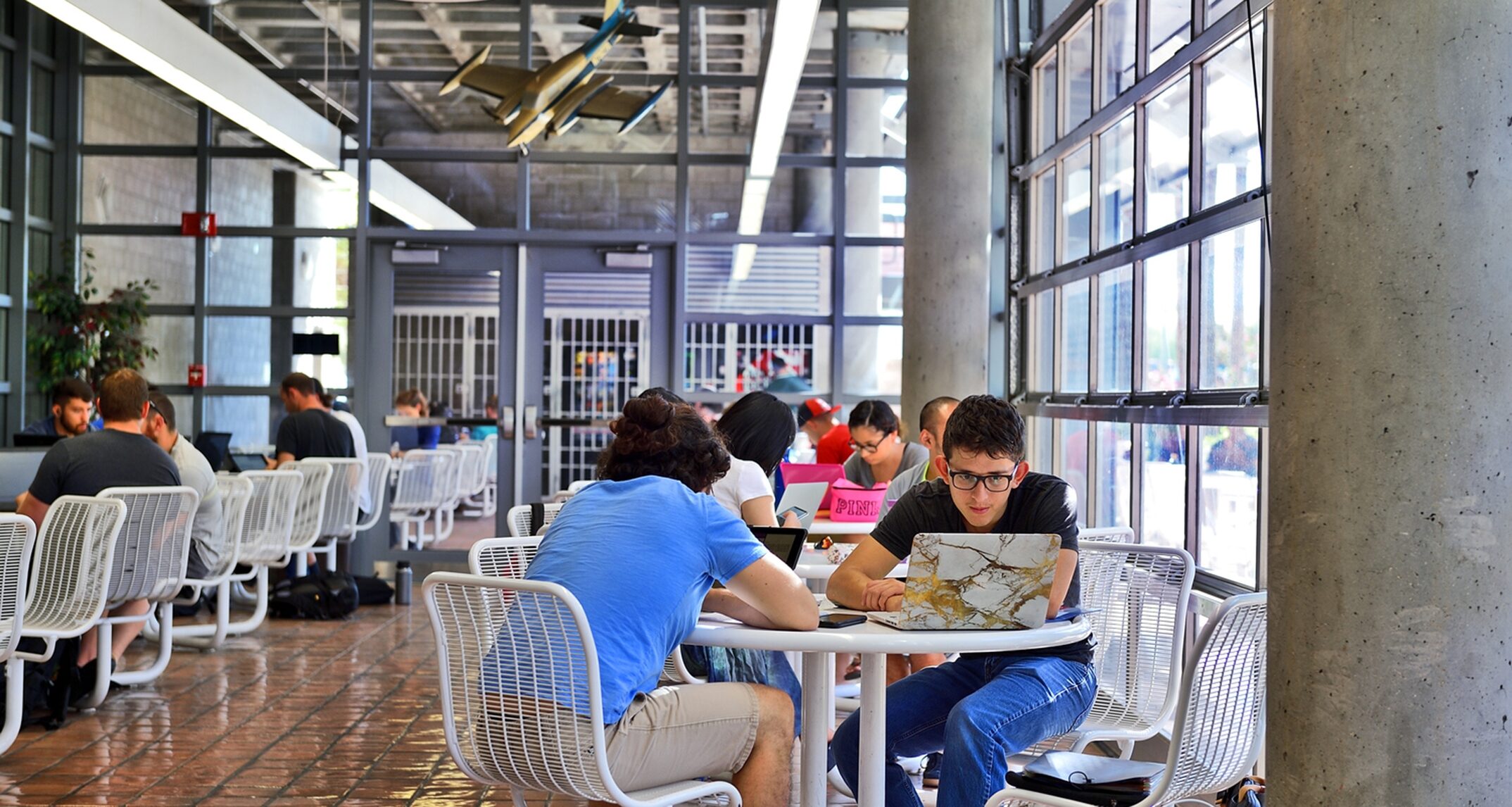
University of Arizona Aerospace and Mechanical Engineering Building
You Are Where You Eat
According to a Harris Study, Millennials highly value experiences, and are increasingly spending time and money on them. The experiential quality of a meal obviously plays into this and is changing the way college administrators, planners and architects are thinking about dining offerings on campus. Since a growing percentage of parents both work, millennials and Gen Z’ers order and eat out more than past generations, and thus are savvier eaters. Because of this, they expect a dining experience that is more similar to the outside world, where choice and customization are king. As a result, many institutions are responding by moving towards an on-campus dining experience closer to that model. For example, many dining facilities are progressively shifting towards marketplace models, where different stations offer greater choice and specific points of view.
From a design standpoint, this can result in different types of branded environments in one large space. Changes in ceiling height, as well as floor and wall finishes, can play a big role in creating the feeling that one is making a considered choice at every meal. Signage, wayfinding, and graphics are also key to the idea that you are not just picking up lunch, but also making a lifestyle choice. Furthering this idea, working to break down the barriers between food preparation and purchasing allow patrons to interact with chefs and dining staff in more meaningful ways. Costel Coca, Design Principal at Webb Food Service Design, notes that “As designers, we are always striving to design dining experiences that create a connection to the culinary process. Open kitchens are great, but todays diners demand more; they desire participation over observation. Positioning kitchens and dining areas for staff interaction is key in developing a successful dining experience.”
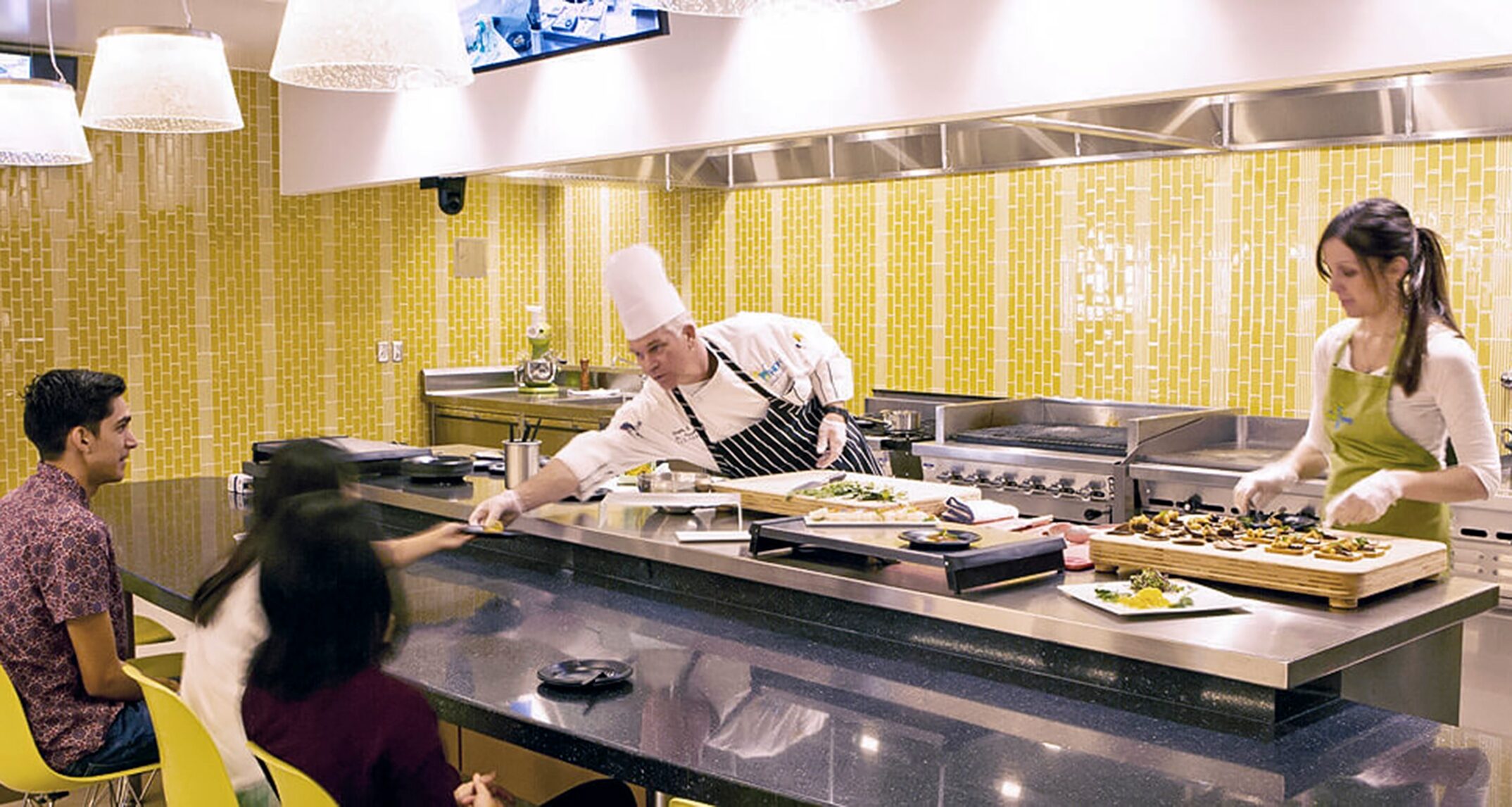
UC San Diego, 64 Degrees at Revelle College - Webb Food Service Design
An Organic, Locally-Sourced Apple A Day…
Do you remember those ubiquitous cafeteria trays that were the start of every meal at school? Many of us might recall them as a sort of challenge—they seemed to be asking to be completely filled, which was a prelude to overeating or excessive waste. Recent studies have shown that healthy students perform better and are more focused on learning, and institutions are adapting accordingly; health, wellness and sustainability are increasingly valued in college dining systems. Tying into the focus on health, campuses are moving away from processed and frozen foods and, when possible, serving fresh, seasonal, and locally sourced options—that’s right, the Farm to Table movement has arrived at a school near you. Like the removal of trays, this is also a win-win in terms of student wellness and sustainability—fresher, organic foods that come from nearby are better for the body and do less damage to the planet. So much so that many campuses are starting their own farms, or tapping their agriculture programs to supply fresh produce.
College and university architects and programmers would do well to plan for the incorporation of such elements in their campus, and to allocate space as necessary. Westmont College, for example, allotted almost an acre of campus land to student gardens that allow not only for student education, but also help supplement the school’s dining program. According to Coca, “Designing for health and wellness will impact dining design, as fresher food requires more frequent food deliveries, impacting the loading dock areas, and requiring additional refrigeration storage. Although freezers are getting smaller, additional refrigeration and dedicated produce preparation space is needed to support an efficient and flexible operation.”
On the other hand, when dining services buy into these concepts, there is the potential to significantly reduce the amount of food waste produced. To deal with what’s left many campuses have started composting programs that feed back into the farms and gardens and creating a campus ecosystem that is the very definition of sustainability. This also benefits campuses by allowing for a reduction in the size of unsightly trash enclosures and mitigating the impact of the growing loading docks.
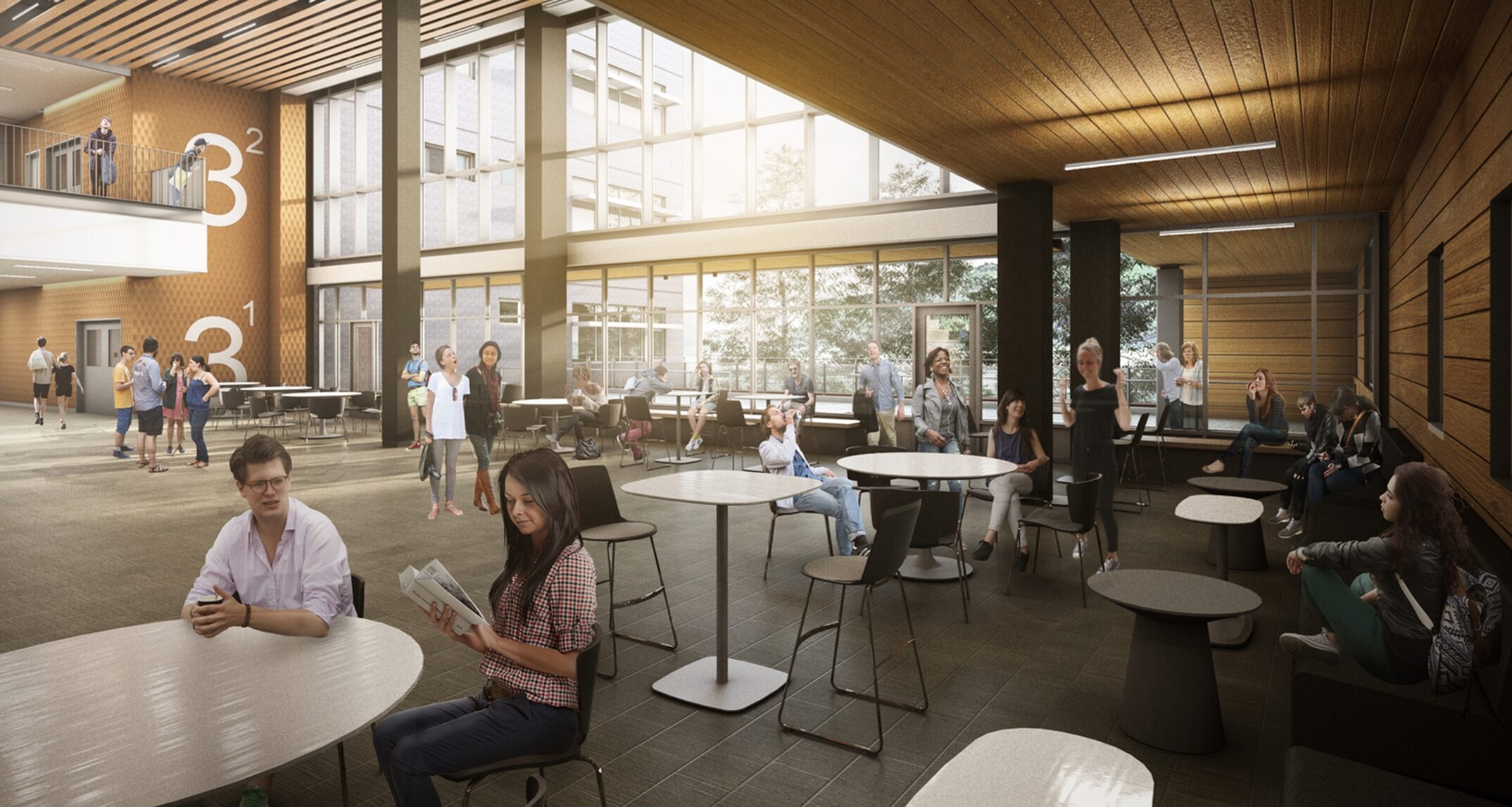
Mount Si High School, Snoqualmie, Washington - NAC Architecture
Breaking Bread
The campus meal plan at my college used to get you into a dining hall three times a day during three very specific times representing breakfast, lunch and dinner. The dining halls were places you went for a meal and not much else—the harsh glow of the fluorescent lighting on the unappetizing buffet still hums in my memory to this very day. But today’s students grew up in a world where sociologist Ray Oldenberg’s concept of the “Third Place” is accepted as an essential part of community creation. Oldenberg believed the third place was a “welcoming space that cultivates essential social experiences” — a home away from home separate from the place you sleep and the place you work. On college campuses, the third place has increasingly come under the aegis of the student dining services. Campus administrators have come to understand that dining can mean so much more to the student experience than simply a utilitarian space where students go to refill their tanks.
With students moving away from three traditional meals and snacking more, the campus cafés and coffeehouses have become places to gather, socialize and study. To better accommodate this type of usage, we should design campus eateries to be warm, inviting spaces with plenty of natural light and a wide variety of comfortable, flexible furniture. Given that the students using these facilities come from more diverse backgrounds than ever, these campus gathering spaces can be great places to meet new people, forge unexpected bonds, and even foster cross-disciplinary collaborations.
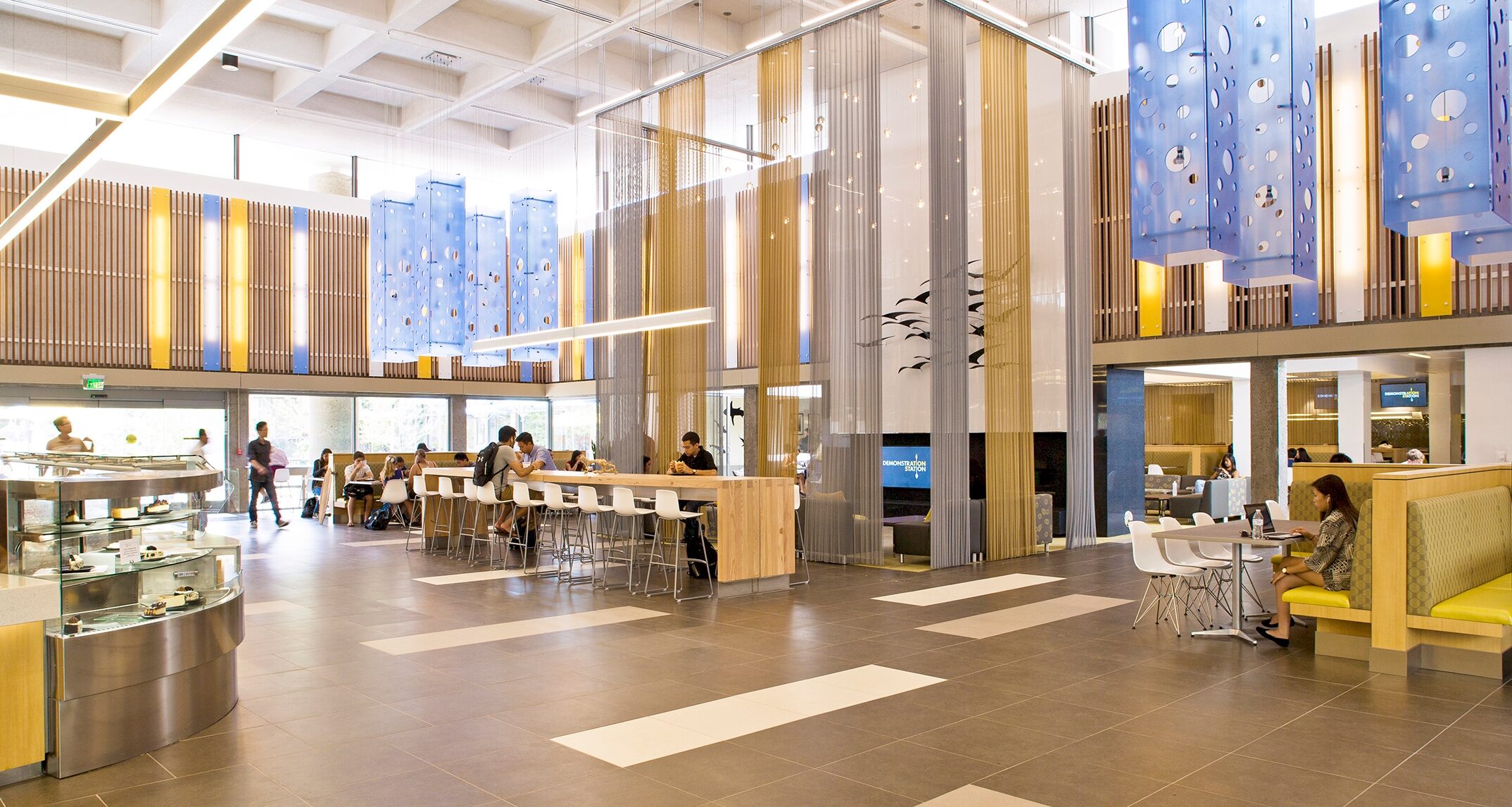
UC San Diego, 64 Degrees at Revelle College - Webb Food Service Design
Many dining halls are also serving double duty on campuses, allowing for presentations, performances, and large group gatherings. To this end, campus planners should strongly consider the location of new dining services at significant crossroads and central campus sites. Flexible and modular furniture can further contribute to the adaptability of these spaces for various events, and when furniture needs to be fixed, designers should create variety in order to better facilitate the wide range of personalities and uses today’s dining halls need to accommodate. Coca notes, “Various seating environments provide social ‘see and be seen’ experiences as well as alternate options for smaller intimate interactions, catering to all users of the space. This intentional zoning creates spaces with high visual interconnectedness that improve participation and seat utilization while encouraging community and low stress collaboration, important for a positive, productive and successful communal experience.”
The modern, experience-loving student is also more interested in cooking than in the past. Providing more- and larger- communal kitchens is a great way for students to share their culture and serve up a slice of home. On-campus grocery options, and even university-provided Blue Apron-type meal kits, are ways to facilitate this type of community building.
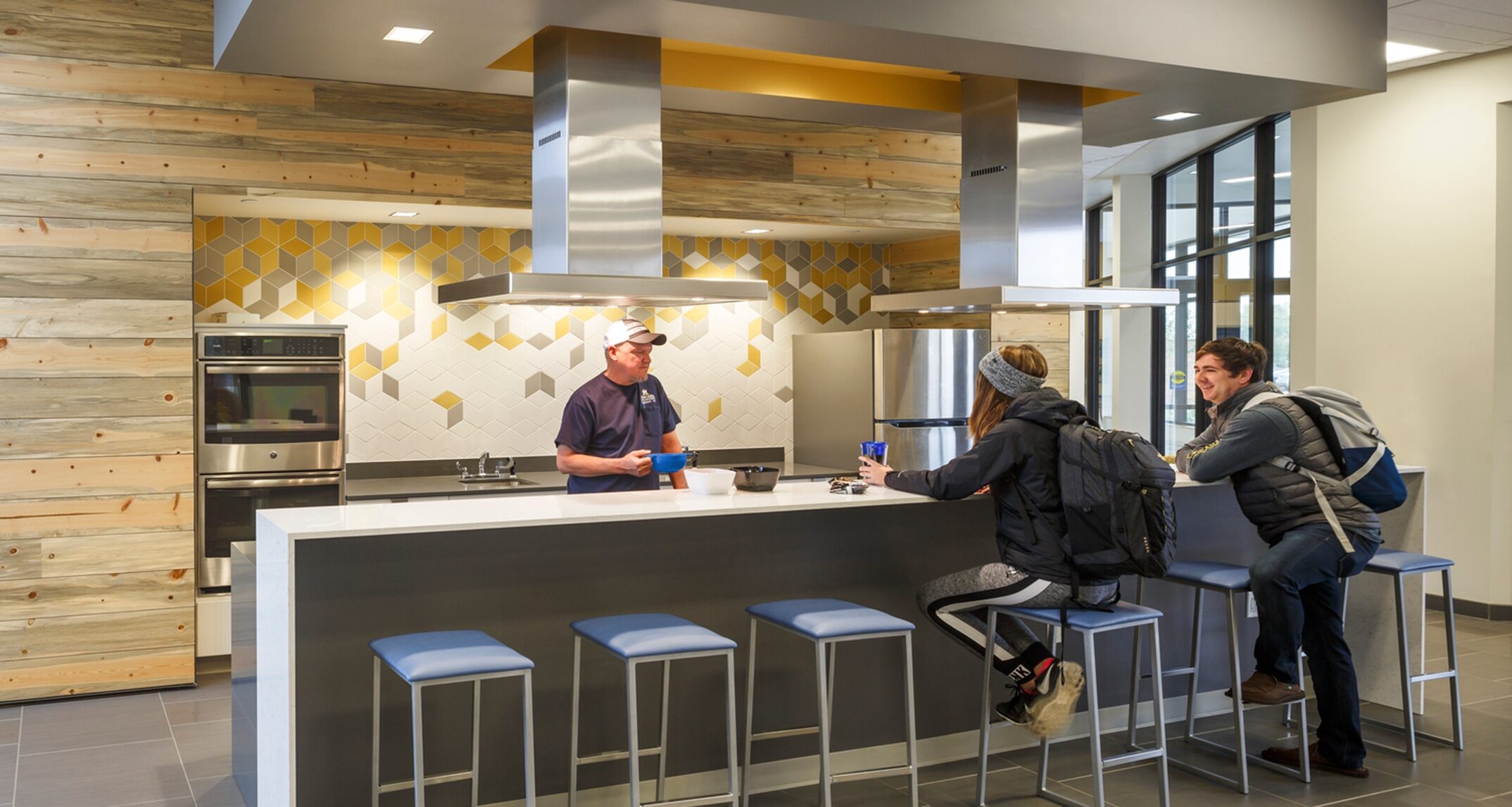
Yellowstone Hall, Montana State University, Bozeman - NAC Architecture
Serving Up the Future
We’ve looked at some of the ways campus dining has evolved to where we are today, but what does the future hold? Jetson-esque robots whizzing around with plates of pie? That might not be so crazy — in fact, servers could go away completely with the advent of technology like that being used in the new Amazon Go Stores, bringing a whole new meaning to the “grab-and-go” concept.
Combining the student’s appetite for variety and seasonality, we can envision institutions building empty, modular, marketplaces, and allowing outside vendors and local businesses to “pop-up” for the week, effectively allowing the school to outsource some of their dining challenges on a daily or as-needed basis. On the health and wellness front, wearables and apps could connect into the campus dining system, giving students a real-time running log of calories and nutrients consumed. Finally, for better or worse, campuses might get in on the delivery game. With the onset of app-based delivery services like Uber Eats and Postmates, institutional dining services could start delivering meals — allowing students to cram without starving. We might one day even see students slipping on goggles to meet their classmates in a virtual dining room.
The inherent complexities of University dining programs are numerous and varied — including budgetary limitations, availability of labor, scheduling constraints, and seating limitations. Nonetheless, some of the most exciting changes happening at our colleges and universities are happening around food. While it’s certainly true that much has changed, and continues to change in student dining, the importance of a good meal shared with friends and colleagues is as universally timeless as our nation’s most wizened institutions.
